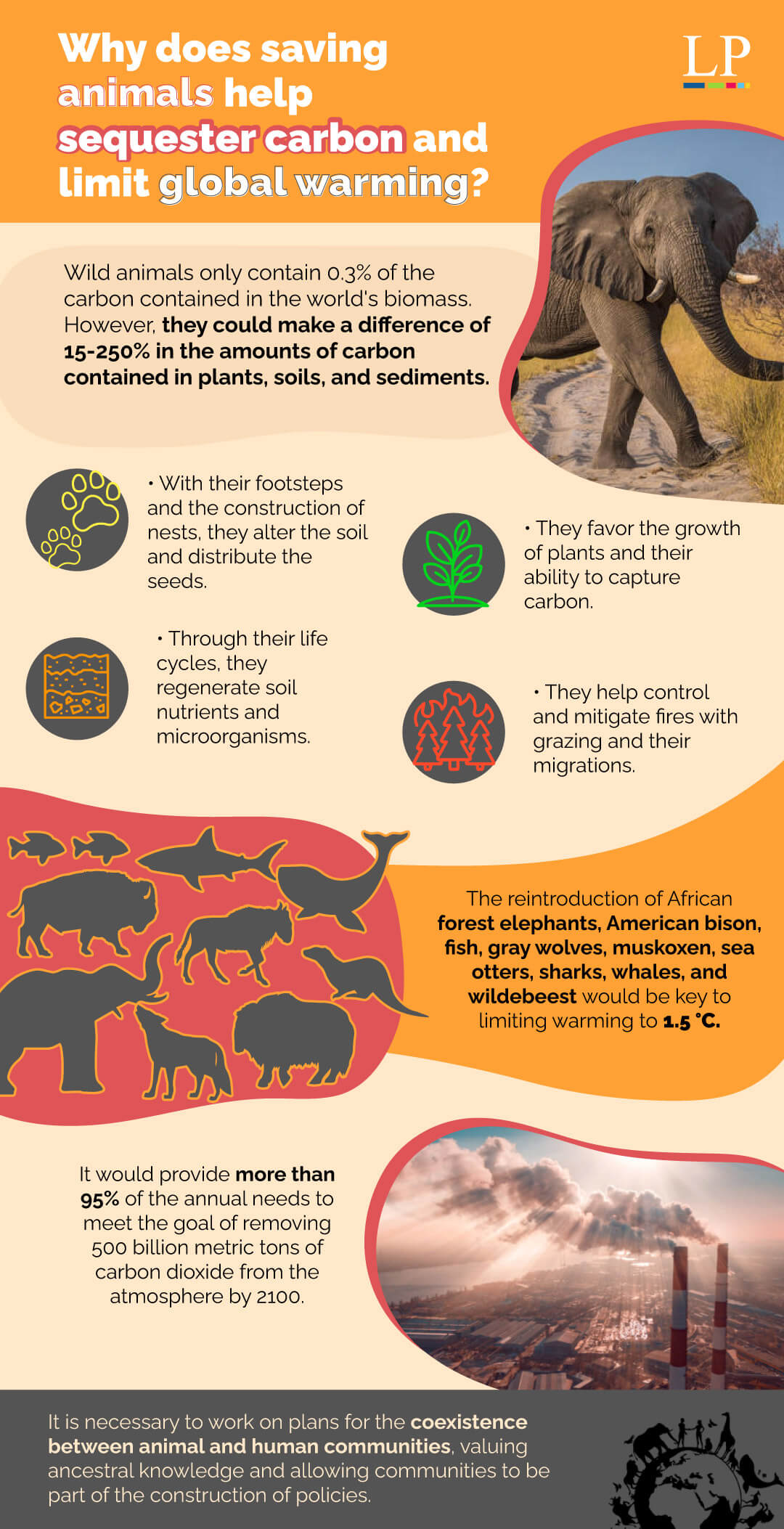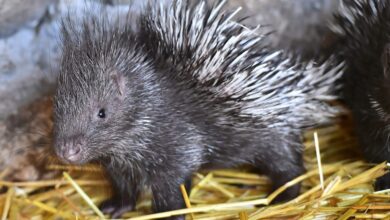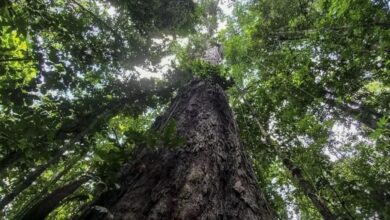Infographic: Why Protecting Animals Sequesters Carbon and Limits Global Warming?
Protecting wild animals and their roles in ecosystems is an overlooked climate solution, but one that has a significant impact on carbon sequestration, a new report says.

Photos: Latin American Post
LatinAmerican Post | María Fernanda Ramírez Ramos
Escucha este artículo
Leer en español: Infografía: ¿Por qué proteger animales captura carbono y limita el calentamiento global?
15 scientists from various institutions, such as Yale University, the Global Rewilding Alliance, the Wild Foundation or the Sasakawa Global Ocean Institute, published research in the Nature Climate Change journal indicating that trophic reconstruction is a crucial solution for the fight against global warming. It is about restoring and protecting the functional roles of animals in ecosystems. However, according to the report, it is an undervalued solution when dealing with carbon capture.
Although one of the great global environmental crises is the loss of biodiversity, according to the research it is not related enough to global warming. "We advocate for a new way of thinking that includes the restoration and conservation of wild animals and their ecosystem functions as a key component of natural climate solutions that can improve the ability to avoid climate warming of more than 1.5 °C," the researchers point out.
For example, they expose the case of the Serengeti. During the 20th century, the wildebeest population was decimated by diseases carried by domestic cattle. Consequently, less land was grazed, which has caused the fires to spread more. "Increased standing grass caused more frequent and intense wildfires that released carbon stored in biomass across 80% of the landscape, making the Serengeti a source of atmospheric CO₂," they write.
We recommend you read: What can be Learned from the Conservation of Badlands?
In this regard, they present evidence showing that the protection and restoration of wild animals (and their functional roles) can enhance natural carbon sequestration and storage to an important dimension. Here are some of the findings of this report:

"Ignoring animals leads us to miss opportunities to improve the scope, spatial extent and range of ecosystems that can be used to help keep climate warming within 1.5 °C," the research concludes. It also points out that, in the face of the impending crisis, it is crucial to make changes in mentality and act quickly, considering various solutions based on nature.




